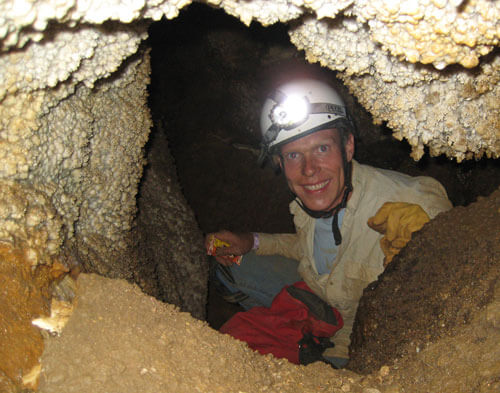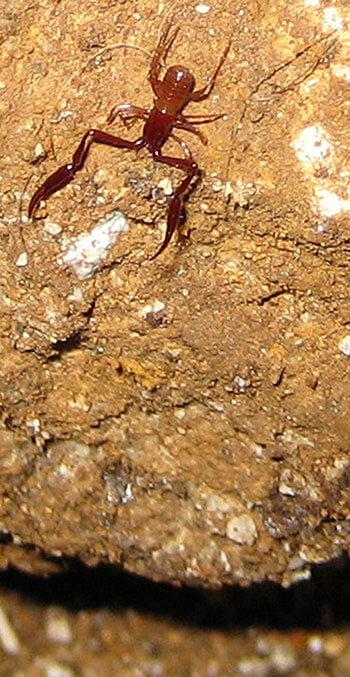For years Glenwood Caverns Adventure Park, located in Glenwood Springs, Colorado, has been abuzz with activity – excited riders whizzing down the alpine coaster, visitors hanging on to their seats in the 4D theater, tour groups going in and out of the caves all day.
And throughout it all, one group of little critters lived quietly, unnoticed. Hidden mostly in the darkness of the nooks and crannies of the Glenwood Caverns was a very unique pseudoscorpion, a rare arachnid that was not seen until 2000, and not officially categorized and named until ten years later.
Although pseudoscorpions have been found in other caves throughout the world, the kind found in the Caverns is a singular type that has never been discovered anywhere else.
The pseudoscorpions resemble small scorpions but are missing the long tail and the dreaded classic tail-end stinger. They are carnivorous, generally feeding on mites, spiders, and other small invertebrates. They have four eyes, eight legs, and two prominent front “arms” with crab-like pincers containing venom. But rest easy – at an average of 1/2 inch in length this arachnid is too small to be harmful to humans.
It took a trip halfway around the world and back for the creature to come into the light, as it were.

Cave biologist Dave Steinmann explores Glenwood Caverns
Ross Dinkelspiel photo

Dr. Mark Harvey University of Western Australia
Glenwood Caverns tour guide Micah Bell first noticed the pseudoscorpion while leading a public cave tour back in 2000.
He mentioned it to Dave Steinmann, a cave biologist who works with the Denver Museum of Nature and Science. He has been exploring Colorado caves for years.
It wasn’t easy for Steinmann to find the tiny insects who prefer to remain in the darkness. It took him over seven hours to find his first specimen, and then another ten trips to locate five samples of the creature.
“The Glenwood Caverns pseudoscorpion has probably been evolving in the cave for millions of years. It’s an amazing creature,” said Steinmann.
“It is unique to other species of its kind because of its reduced eye size, which makes it nearly blind, although it can detect light. Rather than using its eyes, the creature uses sensory receptors on its body to sense and locate its prey.”
Steinmann added, “it is also special because of its very long claws and pincers, the longest seen in a pseudoscorpion of this genus.”
Steinmann passed the specimens on to Dr. William Muchmore, a preeminent scientist and pseudoscorpion expert at the University of Rochester in New York, who first determined it was a new species.
Nearing retirement, Dr. Muchmore then forwarded the samples to Dr. Mark Harvey, an arachnologist and professor at the School of Animal Biology, University of Western Australia.
Dr. Harvey is also the Head of Terrestrial Zoology at the Western Australian Museum and maintains the Pseudoscorpions of the World database.
Dr. Harvey spent several years completing the extensive documentation process, and both scientists jointly authored the final paper that declared the Glenwood Caverns pseudoscorpion to be a new species and gave it a name.
To Steinmann’s surprise, it was named after…him!
Call it luck, call it hard work, call it: Cryptogreagris steinmanni.

Unique pseudoscorpion perched
on a cave rock in Glenwood Caverns




